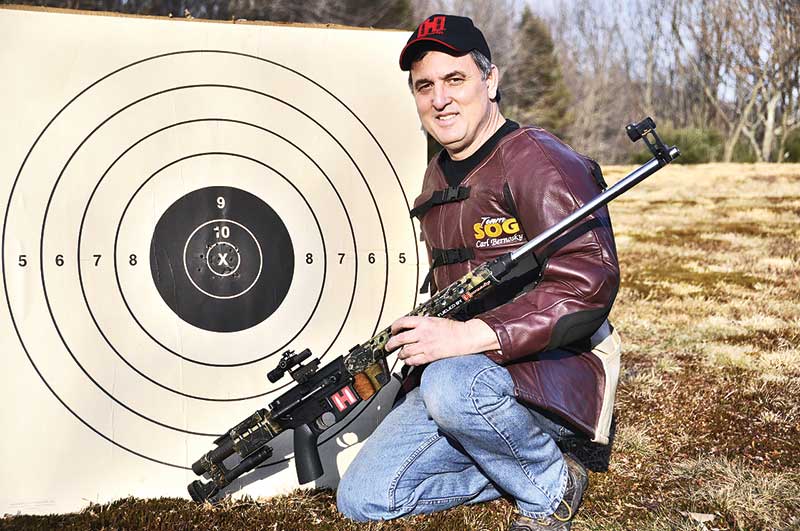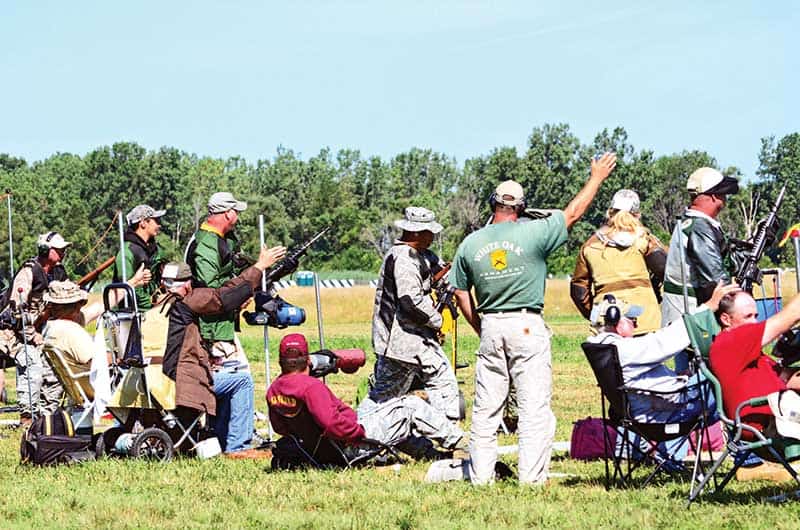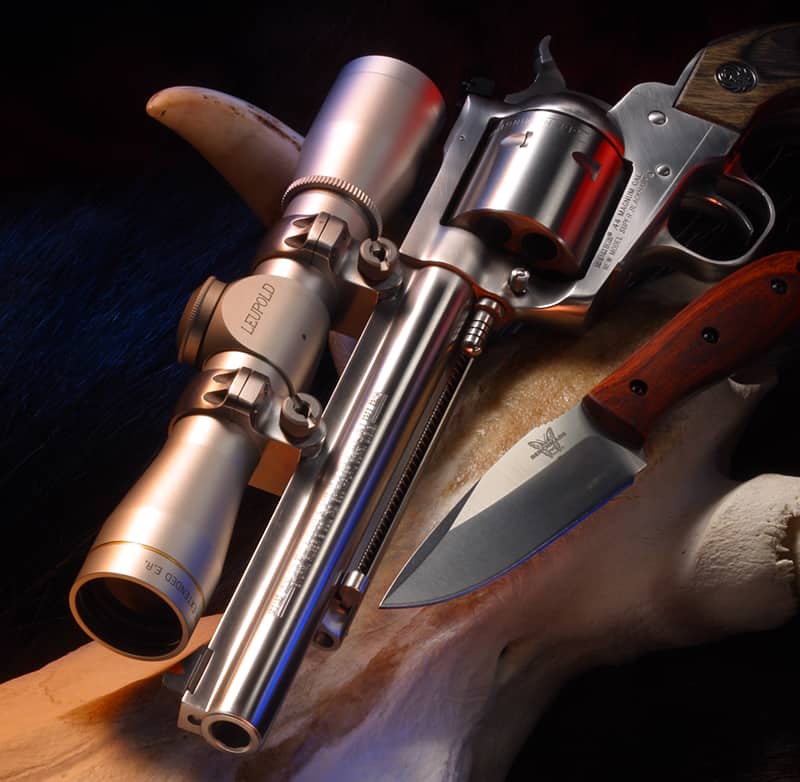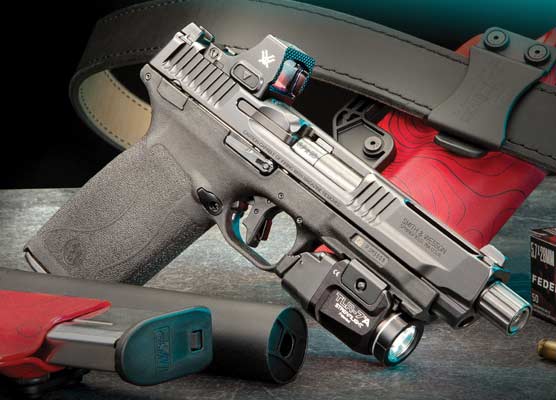High Power Shooting
The Acid Test Of A Rifleman’s Skill.
I’ve always been intrigued by High Power Rifle: the precision of it, the intricate ballistics, the technical aspects of it. There’s a slow motion beauty to it you don’t find in other shooting sports. Such is the case with the National High Power match at Ohio’s Camp Perry—one of the most fascinating events I’ve ever been to. And even though many refer to it as “watching paint dry,” it really is exciting!
Camp Perry itself is impressive and its history even more so. Named after naval commander Commodore Oliver Hazard Perry, who defeated the British in the Battle of Lake Erie in 1813, he is most well known for his message to superiors regarding that battle, “We have met the enemy and he is ours.”
The camp was created in 1907 with 200-, 600- and 800-yard ranges ready with berms and 160 targets. In September of 1907, the National Matches, which started in 1903, moved to Camp Perry. Over the years, the camp has evolved and grown into the spectacular shooting facility it is today with four major ranges providing a total of 210 rifle and 20 revolver targets that can operate simultaneously.
The World Series
The National Matches are now tradition at Camp Perry. For rifle shooters, they are considered the “World Series of Shooting Sports.” Every summer, civilian and military sharpshooters compete for five weeks in rifle and handgun competition in different formats and events. A shooting sports festival, it brings in well over 6,000 participants ranging from beginners to the world’s best.
Two organizations govern the National Matches: the National Rifle Association (NRA) and the Civilian Marksmanship Program (CMP). A huge event, it includes several different matches including the CMP National Trophy Rifle and Pistol Matches, the Pistol and Rifle Small Arms Firing Schools, CMP Games rifle events and the NRA National Pistol, Smallbore Rifle and High Power Rifle Competitions. But it was the High Power match which captivated me.
Luckily, I have a good friend who is familiar with the High Power Rifle world—10-time High Power National Champion Carl Bernosky—and I didn’t hesitate in calling on his expertise to help me navigate through this foreign world. Carl and I met during the Chevy Truck Sportsman Team Challenge days, a precursor to the present day 3-Gun competition. A 10-year USA Shooting Team member, Carl had retired from international competition just as I started. Shooting air rifle, small bore and 300 meters, he was awarded the International Distinguished Medal for his accomplishments. But it’s the High Power Rifle match at Camp Perry where Carl has made his mark.
Shooting a Match
For a novice, stepping into the High Power match world can be intimating and confusing. The good news is, this sport is well established with rules, regulations and guidelines. The NRA High Power Rifle Rules booklet and the CMP Competition Rules program clearly explain all the rules of the sport and the equipment.
The Camp Perry High Power Rifle event is conducted over four days and there are four different courses of fire for each match. Each match has a possible score total of 800 points as each shot is worth 10 points, so one course of fire is worth 200 points. The total score can add up to 2400 possible.
There are four relays of shooters. While Relay’s 1 and 2 are shooting, Relays 3 and 4 are in the pit, pulling targets and scoring. The Relay’s switch positions after two courses of fire are completed.
Standing: 20 shots at 200 yards. Referred to as slow-fire, you’re allowed 20 minutes to complete all 20 shots. Each shot is scored individually, meaning after each shot, the target is brought down into the pit, scored and reset so the shooter can see the hit. Spotting scopes or binoculars are required and defined as such in the rules. There are also equipment rules such as no sling, etc. Check the rulebook for the equipment requirements.
Rapid Fire Sitting: 20 shots are taken in two 10-shot strings at 200 yards. You have 60 seconds per string and scoring is done after each string. As in Standing, there are equipment and posture rules (e.g., you can use a sling, but you can’t touch your ankles, etc.).
Rapid Fire Prone: 20 shots in two 10-shot strings at 300 yards. You’re allowed 70 seconds per string, and like Rapid Fire Sitting, scoring is done after each string.
Slow Fire Prone: 20 shots at 600 yards. As in Standing, you have 20 minutes to take all 20 shots and each shot is scored individually.
Because of the number of competitors, the matches are formatted so shooters move through the match faster and are off the range by mid-afternoon instead of much later in the day where there is a possibility of running out of daylight. The Camp Perry High Power Match is open to everyone and even though there are hundreds of competitors, there really is only a handful who are truly competitive and those shooters are grouped together in the same relay to keep match conditions equal.
The Rifles
Equipment restrictions are pretty simple. The same gun must be used throughout the four days and for all events. According to NRA rules, ammunition used is no bigger than .338 and no smaller than .223.
Shooters compete based on the type of gun used. Without going into the very in-depth descriptions in the NRA High Power Rifle Rule Book, shooters are classed based on the use of the following types:
Service Rifle: A rifle issued by the US Armed Forces or the same type and caliber of commercially manufactured rifle, having not less than a 4.5-pound trigger pull with a standard type stop and standard type leather or web sling. Typically used is an M1, M1A or AR-15. The most common is an AR-15 with service rifle sights in .223.
Match Rifle: This class has two categories and is made up of two types of rifle platforms. The first category is the traditional manually-operated bolt rifle, such as the Model 70’s or Model 700’s. Today the most popular is the Tubb 2000 or the T2K. The other category is the AR-based match rifle. A tricked out AR-15 with aperture sights and adjustable buttstock. The introduction of wildcat 6mm cartridges capable of feeding out of AR magazines has made this configuration one of the hot new rifles on the line.
I’m a big proponent of not spending a lot of money when you first try any shooting game. Usually, you can start with what you can borrow from a friend or pick up pretty inexpensively. In the game of High Power, most start with a service rifle. Rock River Arms, ArmaLite and the CMP offer the basic service rifle used in High Power. But if you decide to stay in it, this game is so much about accuracy, precision and technology, you’ll want to upgrade pretty quickly.
After reading the rulebook and the program about what you can and can’t use, I looked at what a champion uses and why. When you’ve won as much as Carl Bernosky, there’s no reason to reinvent the wheel—he’s done that several times over.
When Carl started shooting High Power Rifle, it was with a pre-’64 Winchester M70. But then aftermarket parts for the AR platform started being developed, such as the White Oak Precision fully adjustable buttstock and float tubes. Geissele Automatics came out with a crisp-breaking trigger and a faster lock time. And the development of cartridges that could shoot high-BC bullets from AR magazines were cause for Carl to change to the AR platform at the start of the 2007 season.
This is a technically-intense game and after talking to a lot of shooters and watching a few high power matches, there’s a lot more “stuff” you’ll need to compete. But don’t be deterred because you’re a beginner. It may take a while to understand the game, but the next time someone says, “High Power is like watching paint dry,” you’ll be at the head of the line to put the first coat down.
A Typical Match
This is the layout for shooting 80 shots over 4 days for a total of 240 shots and a 2400 aggregate score. As you see, you don’t shoot the four courses of fire all in one day. Three courses of fire are shot per day and are broken out as follows.
Day 1
Standing
Rapid Sit
Rapid Prone
Day 2
Standing
Rapid Sit
Slow Prone
Day 3
Rapid Sit
Rapid Prone
Slow Prone
Day 4
Standing
Rapid Prone
Slow Prone
Meet Norma’s STRIKE Family Of Ammunition
Norma’s STRIKE series brings extreme long-range accuracy and excellent terminal performance at all distances to a wide range of rifle calibers.





